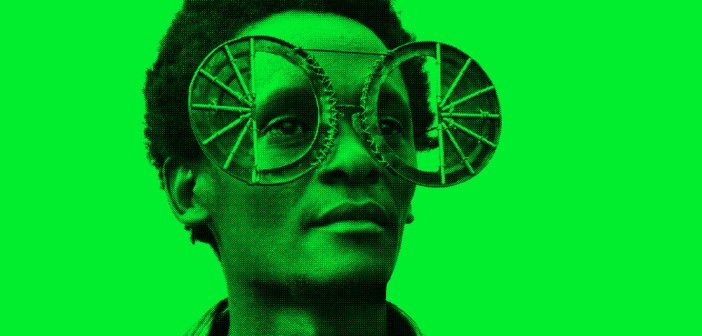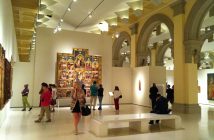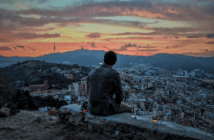‘To think about a future is to think about one’s own possibilities in the world’ – Okwui Enwezor, advising curator.
Making Africa: A Continent of Contemporary Design exhibition, presented at the CCCB, Barcelona from 23rd March to 28th August 2016 is a co-production by the Vitra Design Museum and the Guggenheim Bilbao, having been exhibited at these two museums throughout late 2015 and early 2016.
The exhibition itself aims to portray a representation of the political, economic, social, cultural and technological transformations and advancements taking place in the world, focussing uniquely on the continent of Africa. The world that we live in is in constant transformation, in every way, shape and form, and Africa is playing a huge role in that, where the cultural changes are indisputable. With a population of 1.1 billion, comprising 54 nations, speaking over 2,000 languages as the second-largest and second-most-populous continent in the world, Africa and its culture are simply too large, too complex and too diverse to pinpoint or portray simply. Hence, Making Africa: an exhibition showcasing works from a large variety of creative fields, spanning from object and furniture design, graphic arts, illustration, fashion, architecture, urban planning, art, craft, film and photography; first and foremost focussing on the process of the artwork itself rather than the result or outcome. The artwork displayed targets portraying a sense of responsibility towards the society in which we live rather than the market, as well as making bold statements regarding the future, and our role and functions surrounding it. Making Africa offers a new story, a story yet to be lived, but one where Africa plays a key role; a fundamental role in the development and functionality of our human race.
Prologue
‘Until lions have their own historians, tales of the hunt will always glorify the hunters’ Chinua Achebe, Nigerian writer, interviewed in The Paris Review, 1994.
The exhibition predominantly poses the questions: What is design? What is Africa? And what is African design? These three questions are significant to the artwork displayed, spanning important ideas and philosophies throughout. Wanting to break away from the initial stereotypes of Africa, namely those of hunger, corruption, political instability, humanitarian design or breathtaking landscapes, Making Africa illustrates and interprets a spectrum far wider than that. The exhibition examines stereotypes and questions classical representation, ideas discussed during the interviews recorded as part of the exhibition featuring theorists and practitioners discussing stereotypes of Africa, contemplating how Africa is depicted in the creative sector, and what design can mean for their future; detaching themselves from the clichés associated with Africa, and heading towards a contemporary, original and modern look at the continent, to be seen by all.
A key piece of artwork ‘C-Stunners’, that on the main photo and posters of the exhibition, is the collection of eyewear sculptures, created by the Kenyan artist Cyrus Kabiru. The eyewear makes an unquestionably compelling metaphor for the shift in perspective that is crucial in our society today. The sculptures soften the borders between art, performance, design and fashion. The use of these glasses allow a new and necessary angle on the reality, reminding the viewer how much a pair of glasses can narrow your focus and range of view, therefore indirectly assigning yourself a pre-disposed view of the world. The eyewear focuses on the restrictive perspective one can have, and the prejudices, stereotypes and clichés that people so often have when thinking of Africa. The sculptures are powerful in their message, opening the exhibition on an energetic, influential and persuasive high.
Equally, Jim Chuchu’s ‘All Oppression is Connected’ is a wall painting comprising of several slogans, words, sayings and phrases, constituting a merely partial list of all the aspects of oppression. The assortment of words displayed here, initially perceived as random, portrays the infinite list of oppressive ideas and actions which happen on a day to day basis throughout the world, giving rise to an inconceivable number of innocent victims. Chuchu’s work argues for the recognition of the rights of minorities, above all sexual minorities. Given the widely-known far right-wing attitude of African governments and societies towards sexual minorities, his work in support of these rights undeniably puts him in danger.
In the prologue of the exhibition, alongside C-Stunners and All Oppression is connected are other notable artworks, for example Nikolaj Cyon’s ‘Alkebu-Lan’ questioning what the political map of Africa would be like if it had never been colonised by the Europeans; Kai Krause’s The True Size of Africa, arguing the standard world map to be fundamentally flawed, giving Europe a larger and more prominent position in the globe, and Africa to be much smaller than it is in reality, lessening its geopolitical power. Anton Kannemeyer’s ‘Super Rich Man’ interestingly portrays the rich white man acting as a protector and supporter, representing a form of racism originating from the international system of development aid industry, portraying that the classic white British/ American man does not fundamentally intend to help, rather that he recognises himself as a helper.
I and We
‘In the world through which I travel, I am endlessly creating myself’ Frantz Fanon, Black Skin, White Masks, 1952.
This section of the exhibition discusses the predominance and importance of the human being in the future of technology and design, and what our role is in the matter. On a day to day basis, design proves an effective tool to communicate ourselves, equally making us feel part of something, as setting ourselves apart in some respect. Outlets such as Social Media, blogs and YouTube are used for self-expression by the younger generation, who regard themselves as up and coming in the global culture. This all therefore takes on a political dimension, capturing the new era.
Aiming to differentiate themselves yet again from classic stereotypes, and setting themselves apart from worldwide trends, showing a lack of interest in copying them, they are creating subcultures of their own, which are uniquely and distinctly African. The boundaries between the sexes and sexual minorities are expressed through fashion and the development of fashion culture, addressing the inherent fear of criminality and social inequality which is all too real. These are portrayed through the extensive variety of medias on display, for example Malibongwe Tyilo presents ‘Skattie, what are you wearing?’, South Africa’s most influential fashion, lifestyle and events blog. The world ‘Skattie’ here is short for the Afrikaans word ‘Skattebol’, meaning ‘treasure’, therefore loosely translating as ‘Darling, what are you wearing?’ The original idea behind Skattie was Tyilo’s thirst to document his world, and the people around him, portraying the style of a person as well as personality, body language and surroundings. This section of the exhibition successfully portrays African fashion and lifestyle alongside political reasonings and sexual opportunity.
It highlights the positives of their artistic expression, through fashion blogs, lifestyle magazines and brilliant photographs. However, it also portrays the inevitable shortfalls. On display is the webpage HarassMap , based in Cairo, Egypt, a website aiming to end the perceived social acceptability of sexual harassment in the country. An excellent idea, the volunteer based organisation created an online digital map, reporting on harassment and assault all over Egypt. Contributions are all anonymous, and every sexual assault incident is accompanied by a short description of the incident itself. With constant updates, the reports are clear, aiming to help women all over Egypt know where they will feel the most safe. Not unique to this country, sexual harassment is an issue affecting every city in every nation, which we must all work together to prevent. HarassMap is an excellent idea, a powerful tool used by the organisation in their research and field-based work, workshops and campaigns, actively encouraging all women to speak out and change perceptions towards sexual harassment.
Space and Object
‘The strange, familiar environment of this city is dense with story. The narratives fly at me from all directions’ Teju Cole, Every Day Is for the Thief, 2007.
The third section of Making Africa, Space and Object, focusses on the role of the city in the modern day, and the way in which it will have to continue to grow and expand to meet the ever-increasing popular demand and stress that humans put on it. By the middle of the twenty-first century, 65-70% of the world’s population will live in cities. At the moment, 53% of the world’s population live in urban areas; in 1800 it was only 3%, by 1900 it was almost 14% and by 1950 it had risen to 50%. What is this attraction that pulls us all to live in these dense urban environments? Our design has to respond to this over-capacity, as reflected in this creative design work displayed by acclaimed African artists, whose works all revolve around the city, addressing the social, economic, political and cultural realities occurring in urban centres.
Space and Object is dedicated to individuals living in their spaces, addressing everything that shapes our personal environments. Examples of this include Justin Plunkett’s corrugated metal tower and David Adjaye’s Urban Africa Project: a project spanning over 10 years, with a collection of photographs from 53 cities, aiming to discover urbanism patterns, from official urban densities to unofficial shanty towns, from government regulatory buildings to less-official religious structures. All the material is categorised uncovering a unique view of life in Africa today, classified by geographical terrain and typologies of construction. Urban Africa Project is innovative and fore-thinking, exposing a type of architecture prone to re-designing social space and cityscapes.
Making Africa runs exhibition activities from April through to August, as well as pre-booked guided visits.
22nd March – 31 July 2016
Tuesdays to Sunday – 11:00 to 20:00
More information, ticket prices, and opening hours can be found on the website here.




